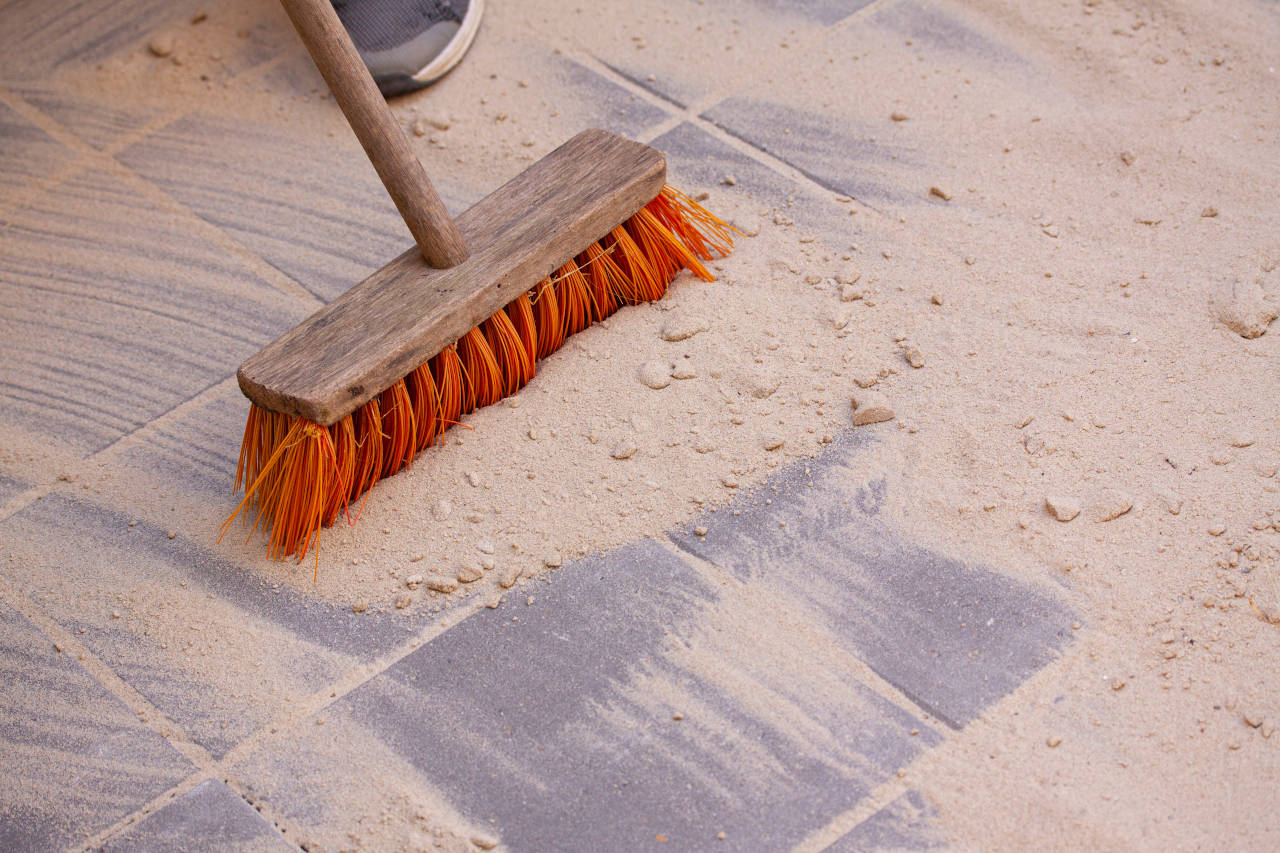Polymeric Sand Calculator
Find how much polymeric sand or jointing sand you need for your paver patio, walkway, or driveway project by entering the size of the installation below.
On this page:
What is Polymeric Sand?
Polymeric sand, or jointing sand, is a fine sand bound with polymers that is used to fill joints between pavers.
It’s often swept into the joints and then sprayed with water, which activates the polymers and causes the sand to harden. This makes polymeric sand more durable and longer lasting than some alternatives. Polymeric sand is added after the pavers are installed to finish the project.

After hardening, it is resistant to washing out, prevents ant hills and weed growth, and locks the paver installation, preventing pavers from coming loose and making the patio or driveway more durable. Having material between the joints of the pavers also protects them from damage.
The sand is able to flex and move, so if there are upheavals or movement in the ground, the paver edges do not hit one another. This keeps the pavers from chipping on the edges or cracking.
How to Estimate Polymeric Sand Coverage
Polymeric sand coverage will vary slightly from product to product, and is largely determined by the thickness of the gap between the pavers, as well as the size and depth of the pavers you are using. Installations with a large gap between pavers or when using a paver with a tumbled edge will require more polymeric sand to fill the gaps. Pavers with straight edges or that have vitrified edges – edges that have been machined to be very straight – will need less sand.
When filling small gaps, a 50lb bag of polymeric sand will usually cover 75-100 sq ft. When filling wide gaps of 1/4″ to 3/8″ a 50lb bag will usually cover 30-60 sq ft.
Accounting for Wide Joints
Wider gaps, for example, when using flagstone pavers, will require even more sand to fill, even if the depth and size of the pavers remain the same. A flagstone installation with large or irregular gaps may need a 50lb bag for every 8-10 sq ft.
It is important to verify the coverage for the material you’re using, the amount of coverage is often labeled on the package.
Accounting for Paver Size
Keep in mind that the overall size of your pavers will also influence the amount of sand needed. Small pavers have more joints than large pavers, so they need more sand per square foot than larger pavers may. Depth will also play a role; a brick paver that is 3″ thick will require more sand than a flagstone paver that is 1″ thick.
After identifying the polymeric sand coverage for your patio, simply divide the square footage of the area by the coverage of the sand to find how many bags are needed.
Alternatives to Polymeric Sand
Polymeric sand is only one material that can be used to fill the joints between pavers. Other materials are also available that allow for more water drainage, such as fine, dry sweeping sand.
While polymeric sand is designed to harden with water and doesn’t wash out as easily, dry sweeping sand and other alternatives can allow for better drainage, which may be a better choice in wet climates.
Keep in mind that polymeric sand does last longer than dry sweeping sand. However, even polymeric sand can wash out over time, and may need to be replaced for older paver installations.
If you prefer wide spaces between pavers, such as a 2″ to 6″ gap, you can also use gravel or stone to fill the space and lock them together.
See our paver calculator to find how many pavers you need to install a patio.




